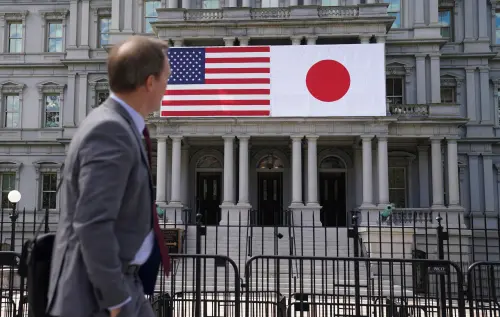In an attempt to achieve its 8% annual growth target, China has embarked on what the leadership describes as a program of increased infrastructure spending. In August, fixed investment by the state was up 17.4% in nominal terms over the 1997 level, a dramatic jump from the 13.6% increase notched as recently as June. In real terms, state investment expenditure is now expanding at an annual rate of well over 20%. While this may raise the growth rate, it represents a substantial retreat from the ambitious program of accelerated reform of state-owned enterprises and banks outlined by Zhu Rongji earlier this year and endorsed by the National People’s Congress in March.
The massive size of the expenditure program, now pegged by State Councilor Wu Yi at 10 trillion yuan ($1.2 trillion) for 1998-2000, belies the claim that it is limited to infrastructure projects. The projected amount will be approximately 40% of cumulative gross domestic product over the three-year period. Thus the program, in fact, is designed to ratchet up fixed-asset investment across the board in the state sector. Increased funding is flowing not only to some well-chosen infrastructure projects, but to a broad range of state-owned manufacturing enterprises.
Unfortunately, the program is not being financed from government revenues but mostly by a substantial increase in lending by state-owned banks. Each of the major banks have issued statements pledging to support specific state investment initiatives. The growth of credit has been accelerating since the first quarter of the year with the greatest increases occurring in July and August. By the end of August loans outstanding were 16.4% higher than a year ago.
The acceleration of directed lending runs counter to last spring’s reform program, which called on banks to operate on a commercial basis. At that time Zhu Rongji, the architect of the reform, stated categorically that politically directed lending in China would end as of 1998. But in late June, when the central bank issued a decree requiring banks to continue to expand their lending to money-losing state-owned enterprises, this initiative appears to have been abandoned. Many recipients of increased lending are value-subtracting companies that can not cover their operating costs from their income. Most of these should have been closed years ago.
The program of accelerated lending almost certainly will lead to a further deterioration in the quality of loan portfolios, particularly those of China’s largest state-owned banks. Central bank governor Dai Xianglong has acknowledged that by year-end 1997, nonperforming loans already comprised 25% of the total loans of these banks, a level substantially higher than the pre-Asian crisis levels in the banking systems of Thailand, South Korea, and Indonesia. The share of nonperforming loans has risen further since then and there is now no end in sight to the deterioration of credit quality.
The chief rationale for stepping back from last spring’s reform initiative is increasing levels of urban unemployment and associated social unrest, especially in the northeast and other regions still dominated by state-owned manufacturing firms. This is misguided. The most effective way of absorbing workers released by bankrupt state enterprises would be expanded commercial lending to nonstate firms, particularly to genuinely private firms.
Private firms now produce almost a fifth of manufacturing output but have never had significant access to bank credit. At year-end 1997, for example, their borrowing was only 0.7% of total credit outstanding from the financial system. These firms have sounder balance sheets and are more profitable than the state-owned firms that over the years have consistently grabbed the lion’s share of credit extended through the financial system.
Accelerated spending on state investment projects may boost the rate of growth in the short run. But it is likely to hasten the long-term decline in the rate of return on assets in the state sector. That, in turn, means that fewer and fewer firms will be able to pay even the interest on their bank debt. Thus the program also will further sap an already largely insolvent financial system.
That increases the possibility of a domestic banking crisis that could both push China into a deep recession and lead to a devaluation of the currency. Although a banking crisis probably can be avoided, the continued build up of nonperforming loans will raise the cost of the bank bailout that is all but inevitable unless the regime contemplates allowing the state-owned banks to default on liabilities to households, which now stand at almost two-thirds of gross domestic product.
China’s leadership has made its short-term growth objective its highest priority. Longer-term structural reform of state-owned banks and enterprises is being postponed. Ironically, even if the program increases the rate of growth, ultimately the costs of postponed reforms will be even greater, meaning it likely will fail to alleviate social unrest.


Commentary
Op-edChina Chooses Growth Today, Reckoning Tomorrow
September 30, 1998